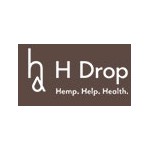Full-Spectrum vs Broad-Spectrum vs CBD isolate
Hemp flowers and leaves, although they are the most cultivated for CBD, also contain more than 480 valuable elements: cannabinoids, terpenes, flavonoids.
Terpenes are responsible for the fragrance of hemp flowers, while flavonoids for color. But both groups of elements can also interact with the human body and contain anti-inflammatory attributes.
Dr. Raphael Mechoulam (known as "the father of CBD") was the first scientist to describe the "entourage effect" of hemp in 1998, demonstrating that different compounds in hemp flowers can work together to achieve better results than individually.
THC residual values are widely believed to provide the entourage effect and increase the efficacy of cannabidiol (CBD).
However, other cannabinoids, terpenes, and flavonoids appear to provide similar synergistic capabilities, so products without THC can be just as effective.
Therefore, it is important to check the product label to find out if the product is actually full-spectrum, broad-spectrum, or CBD isolate.
Full spectrum
The full spectrum label means that the product reflects the natural composition of the hemp plant. Contains all residual cannabinoids (CBDA, CBG, CBC, CBV and others), terpenes (myrcene, limonene, pinene, humulene, linalool, bisabolol, caryophyllene, ocimene and others) and flavonoids (apigenin, quercetin, cannaflavins, b-sitosterol and others).
Most cannabinoids, terpenes, and flavonoids are sensitive to light, temperature, oxidation, and other specific physico-chemical reactions. Therefore, in order to maintain a full spectrum composition of hemp flowers, the producer will apply gentle and low-temperature processing methods (harvesting, drying, extraction, distillation).
Full spectrum products contain the widest range of hemp flower compounds and are believed to be the most effective as they provide the broadest entourage effect, providing the synergy of different elements.
The effect of applying full spectrum oil should be roughly the same as eating the hemp flower itself (since eating raw plants is not very entertaining).
It also smells and tastes a lot like hemp flowers.
The downside to full spectrum products is that they also typically contain THC levels of 0.05 to 0.2%, which can lead to side effects (anxiety, dizziness), cause you to fail a drug test, or are simply illegal in countries / states with zero-tolerance to THC.
The good news is that some labs (including H Drop's) can produce full-spectrum THC-free products.
This is achieved by applying state-of-the-art preparative CO2 chromatography technology (do not confuse it with CO2 extraction), which removes 99.9% of the THC molecules, leaving other cannabinoids, terpenes and flavonoids intact.
PS: Some high-end producers call "full spectrum THC-free" products "broad spectrum." However, "broad spectrum" is a misleading term, which does not indicate how broad the composition of cannabinoids, terpenes, and flavonoids is. Some manufacturers add only a few isolates, obtaining the right to use the "broad spectrum" label. To avoid confusion, we emphasize that our products are full spectrum, except for THC.
Spread spectrum
The broad spectrum label, as mentioned in the previous paragraph, is quite confusing. It could mean that the product is full spectrum, BUT excluding the THC, which was carefully removed during the production process.
It could also mean that the product includes only CBD and some other isolated cannabinoids and / or terpenes, which were selectively mixed by the manufacturer.
So broad spectrum products could contain:
- the full spectrum of cannabinoids, terpenes and flavonoids, except THC (the H Drop option calls full spectrum THC free).
- or, for example, CBD + CBDA + CBG + CBGA + limonene + myrcene + pinene.
- or CBD + CBG + CBC + CBDV + CBV.
- or just CBD + CBDA.
Basically, it is any composition of more than one hemp flower compound, which must appear on the label.
However, broad spectrum products are always THC free.
So, the broad spectrum effectiveness depends on the specific composition of cannabinoids and terpenes selected by the producer. In any case, they fully guarantee legality and security. Also, its flavor is not as intense as full spectrum.
CBD isolate
CBD isolate is the purest and usually the cheapest form of CBD.
It is a completely separate CBD molecule of over 99% purity.
It would hardly be possible to dilute full-spectrum or broad-spectrum oil in secondary products, such as food, drink or cosmetics. For that reason, the topical producers of CBD, water, cookies, gummies, gum, chocolate, coffee, etc. They use CBD isolate as an ingredient.
Some CBD oils and capsules also include only CBD isolate.
Isolate is preferred by users who want to avoid any hemp taste or smell. CBD isolate also means that it does not contain THC. However, these products completely lose the desired entourage effect.


